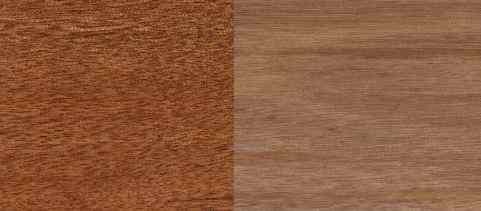
Copal (Protium paraense)
Family: Burseraceae
Common names: Anime, Balsamo, Bois encens, Breu branco, Breu preto, Carano, Copal, Fontole, Kurokai, Latilla, Pom, Sucuriuba, Tacamahaco
Distributed in: Brazil, Columbia, Ecuador, French Guiana, Guatemala, Guyana, Honduras, Mexico, Nicaragua, Panama, Paraguay, Peru, Suriname, Venezuela (Central America, Latin America)
Distribution overview: The species occurs throughout tropical America, and is most abundant in the Amazon basin. It is frequent in the marsh forests of Guyana.
Common uses: Beams, Building construction, Building materials, Cabin construction, Chairs, Chests, Concealed parts (Furniture), Concrete formwork, Construction, Core Stock, Decks, Decorative plywood, Decorative veneer, Desks, Dining-room furniture, Dowell pins, Dowells, Drawer sides, Factory construction, Figured veneer, Fine furniture, Floor lamps, Form work, Foundation posts, Framing, Furniture , Furniture components, Furniture squares or stock, Hatracks, Heavy construction, Interior construction, Interior trim, Joists, Kitchen cabinets, Light construction, Living-room suites, Millwork, Office furniture, Particleboard, Plain veneer, Plywood, Veneer
Product sources: The ITTO reports that timber from this species is produced at a low rate. It is occasionally exported.
Environment profile: Status has not been officially assessed
Tree size: Trunk diameter is 300-350 cm
Colors: the heart isWhite, Yellowand the sapwoodWhite, Yellow.The grain isStraight to very irregular and interlocked , the textureVery fine/fairly coarse and the lusterHigh
Natural durability: Susceptible to termite and dry wood insect attack, Very little natural resistance
Odor: No specific smell or taste
Silica Content: May contain silica
Kiln Schedules: T3 - C2 (4/4) US
Kiln Drying Rate: Naturally dries quickly
Drying Defects: Ring Shakes, Splitting
Ease of Drying: Reconditioning Treatement
Comments: Wounds in bark yield resin for 'elemi' incense
Blunting Effect: Timber may be abrasive due to silica
Boring: Very good to excellent results
Carving: Seasoned wood is generally easier to work
Cutting Resistance: Fairly Difficult to Very Difficult to saw
Gluing: Very Good to Excellent Results
Mortising: Very Good to Excellent
Moulding: Very Good to Excellent
Movement in Service: Very Good to Excellent
Nailing: Fairly Easy to Very Easy, Very Good to Excellent
Planing: Very Good to Excellent
Resistance to Abrasion: High
Resistance to Impregnation: Sapwood is permeable
Response to hand tools: Seasoned wood works well
Routing recessing: Non-Silicieous, dry material are generally easier
Veneering qualities: Veneers easily, Veneers moderately easy
Steam bending: Fair to Good Results
Screwing: Fairly Easy to Very Easy, Very Good to Excellent Results; Turning: Very Good to Excellent Results
Painting: Very Good to Excellent; Polishing: Very Good to Excellent; Staining: Very Good to Excellent; Varnishing: Very Good to Excellent;
- Numerical data Metric
- Numerical data English
- Strength properties
- References
 |
 |
 |
 |
| Item |
Green |
Dry |
Metric |
| Specific Gravity |
0,51 |
|
|
| Density |
|
608 |
kg/m3 |
| Bending Strength |
680 |
957 |
kg/cm2 |
| Crushing Strength |
325 |
544 |
kg/cm2 |
| Hardness |
|
444 |
kg |
| Impact Strength |
|
|
cm |
| Shearing Strength |
|
|
kg/cm2 |
| Stiffness |
103 |
118 |
1000 kg/cm2 |
| Tangential Shrinkage |
7 |
|
% |
| Radial Shrinkage |
4 |
|
% |
| Weight |
592 |
480 |
kg/m3 |
| Maximum Load |
|
|
cm-kg/cm3 |
| Toughness |
|
188 |
cm-kg |
| Static Bending |
|
|
kg/cm2 |
|
 |  |  |  | | Item | Green | Dry | English | | Bending Strength | 9678 | 13622 | psi | | Density | | 38 | lbs/ft3 | | Hardness | | 980 | lbs | | Maximum Crushing Strength | 4626 | 7738 | psi | | Stiffness | 1470 | 1691 | 1000 psi | | Toughness | | 164 | inch-lbs | | Specific Gravity | 0.51 | | | | Weight | 37 | 30. | lbs/ft3 | | Radial Shrinkage | 4 | | % | | Tangential Shrinkage | 7 | | % | | Volumetric Shrinkage | 10 | | % | |
Resists denting and marring
Max. crushing strength = high
Heavy
Hardness (side grain) = medium
Density = high
Compression strength (parallel to grain) = high
Boone, R.S., C.J. Kozlik, P.J. Bois, E.M. Wengert. 1988. Dry Kiln Schedules for Commercial Hardwoods - Temperate and Tropical. USDA, Forest Service, General Technical Report FPL-GTR-57, Forest Products Laboratory, Madison, Wisconsin.Chichignoud, M., G. Deon, P. Detienne, B. Parant and P. Vantomme.1990.Tropical Timber Atlas of Latin America.International Tropical Timber Organization (ITTO, Centre Technique Forestier Tropical, Division of CIRAD, 45 bis Avenue de la Belle Gabrielle, Nogent-sur-Marne, CEDEX, France.Chudnoff, M.,1984,Tropical Timbers of the World,U.S.A. Department of Agriculture, Forest Service, Forest Products,Laboratory, Madison.
|








